Imagine stepping into your garden on a crisp winter morning or a sunny summer afternoon, each season unveiling its unique charm and beauty. A garden that delights the senses year-round is not just a dream, but a rewarding reality that you can create with thoughtful planning and a touch of creativity. Whether you’re just beginning your gardening journey or have cultivated your green thumb for years, making your garden look beautiful throughout the year is both an art and a science.
By exploring the right combination of plants and design principles, you can transform your outdoor space into a dynamic tapestry of colors, textures, and forms that change with the seasons. In this article, you’ll discover practical tips and expert advice on choosing perennial favorites, playing with seasonal accents, and incorporating evergreen elements. From understanding how to layer your plantings to mastering the art of succession planting, you’ll find everything you need to keep your garden vibrant and inviting no matter the time of year. So, let’s dig in and unearth the secrets to a garden that’s always in bloom!
Plan Seasonal Plant Arrangements
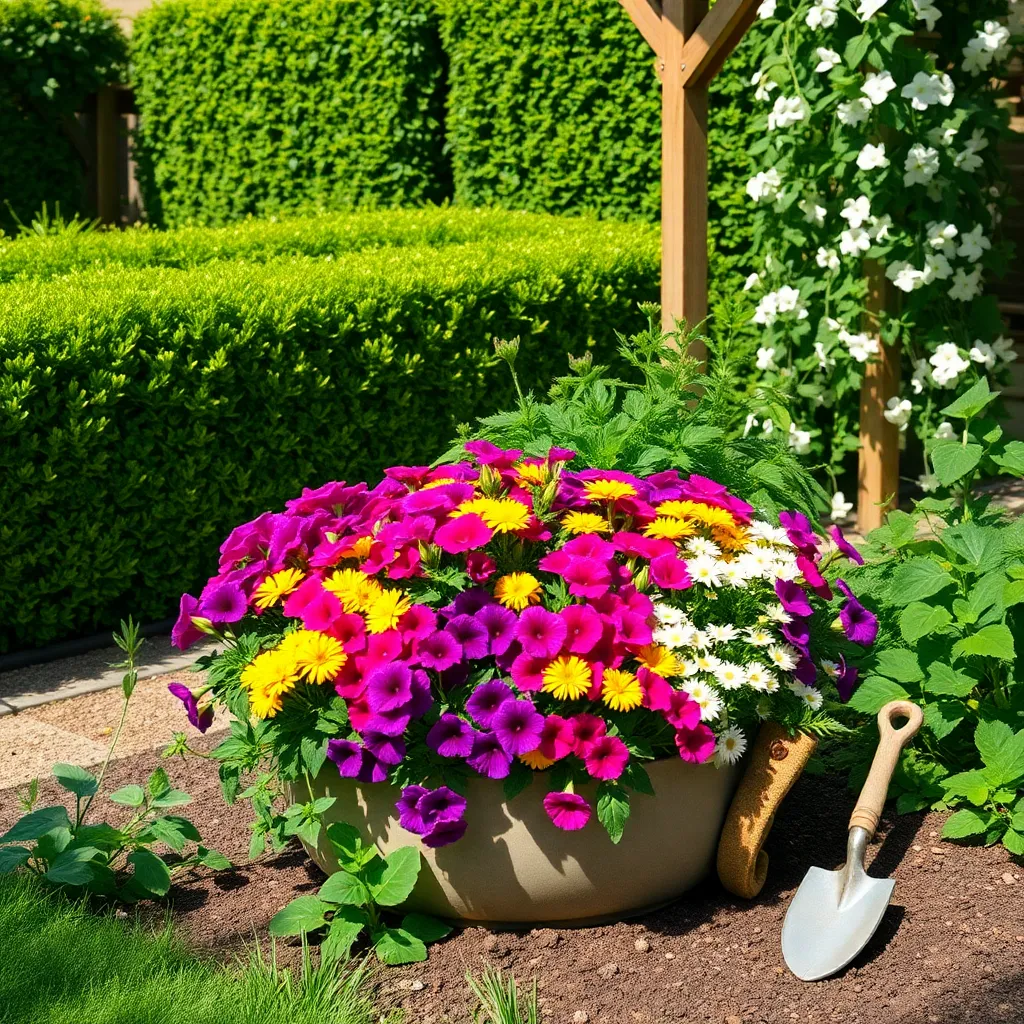
To create a visually appealing garden throughout the year, it’s essential to plan your plant arrangements according to the seasons. Start by selecting a mix of plants that bloom at different times, ensuring continuous color and interest.
Begin with spring bulbs like tulips and daffodils, which can be planted in the fall for a vibrant start to the year. These bulbs thrive in well-drained soil and should be watered moderately to prevent rot.
For summer, consider incorporating perennials such as daylilies and coneflowers, which offer long-lasting blooms and require full sun. These hardy plants benefit from a balanced fertilizer in early spring to support their growth through the warm months.
As autumn approaches, incorporate plants like chrysanthemums and ornamental grasses, which provide texture and color as temperatures cool. These plants prefer slightly acidic soil and should be pruned back after flowering to encourage new growth.
Finally, add evergreen shrubs such as boxwood or juniper to maintain structure and greenery during the winter months. These shrubs are low-maintenance, requiring only occasional pruning and watering during dry spells.
By strategically planning your plant arrangements, you can ensure that your garden remains beautiful and vibrant all year round, providing a continuous source of enjoyment. Experiment with different plant combinations and observe how they interact throughout the seasons for an ever-evolving garden design.
Select Diverse Blooming Species
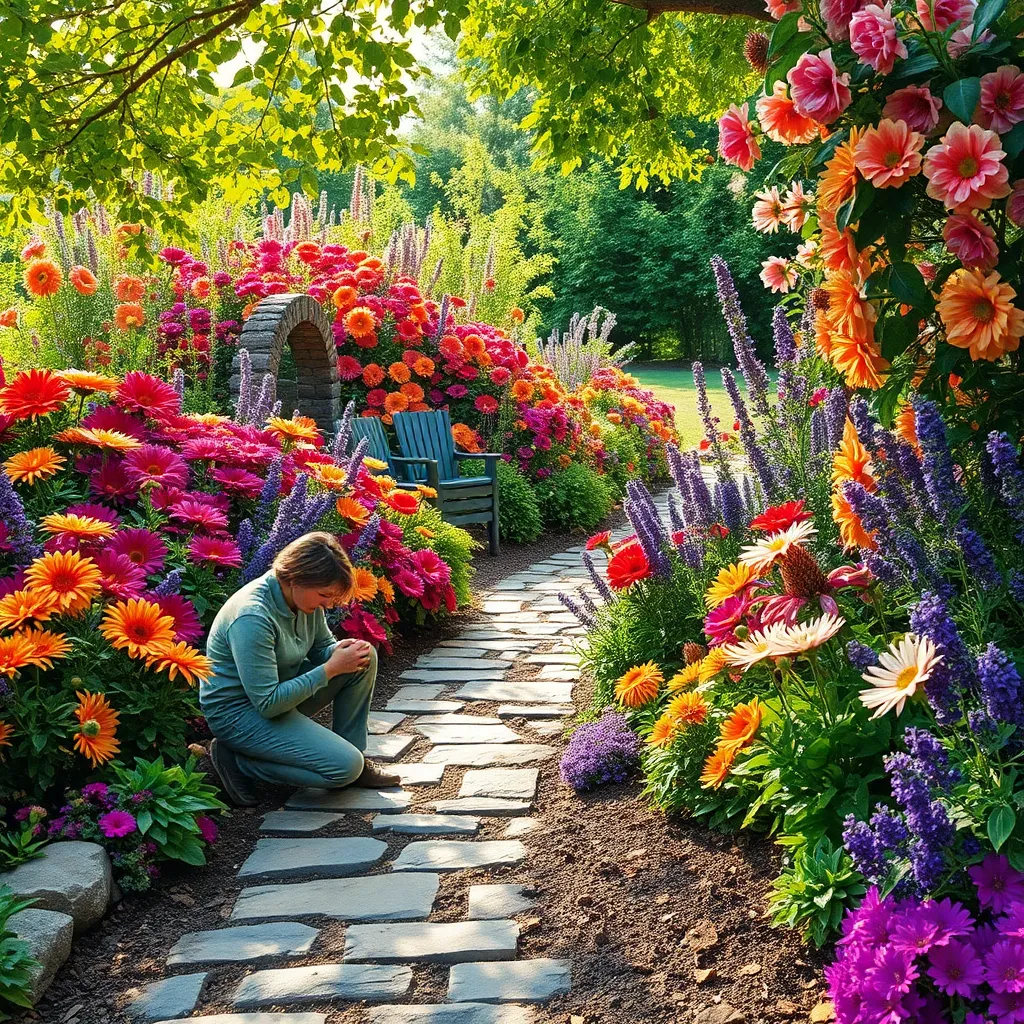
Diversifying your garden with a variety of blooming species ensures visual interest and color throughout the year. Consider planting a mix of perennials, annuals, and biennials to achieve this continuous bloom cycle.
Start by selecting plants with staggered blooming periods to cover each season. For example, choose early-blooming species like crocuses or daffodils for spring, which can thrive in well-drained soil and require moderate watering.
Mid-season bloomers such as daylilies or lavender can add vibrant colors in summer and thrive in sunny spots with regular watering. Ensure they are planted in soil rich with organic matter to support their growth.
Incorporate late-blooming species like asters or chrysanthemums for fall, which can handle cooler temperatures and require less frequent watering. For experienced gardeners, consider adding winter-blooming plants like hellebores, which prefer shaded areas and need moist, well-drained soil.
Group plants based on their light and water needs to simplify maintenance and promote healthy growth. This method allows you to optimize plant health and ensure your garden remains lively and colorful all year long.
Maintain Healthy Soil Conditions
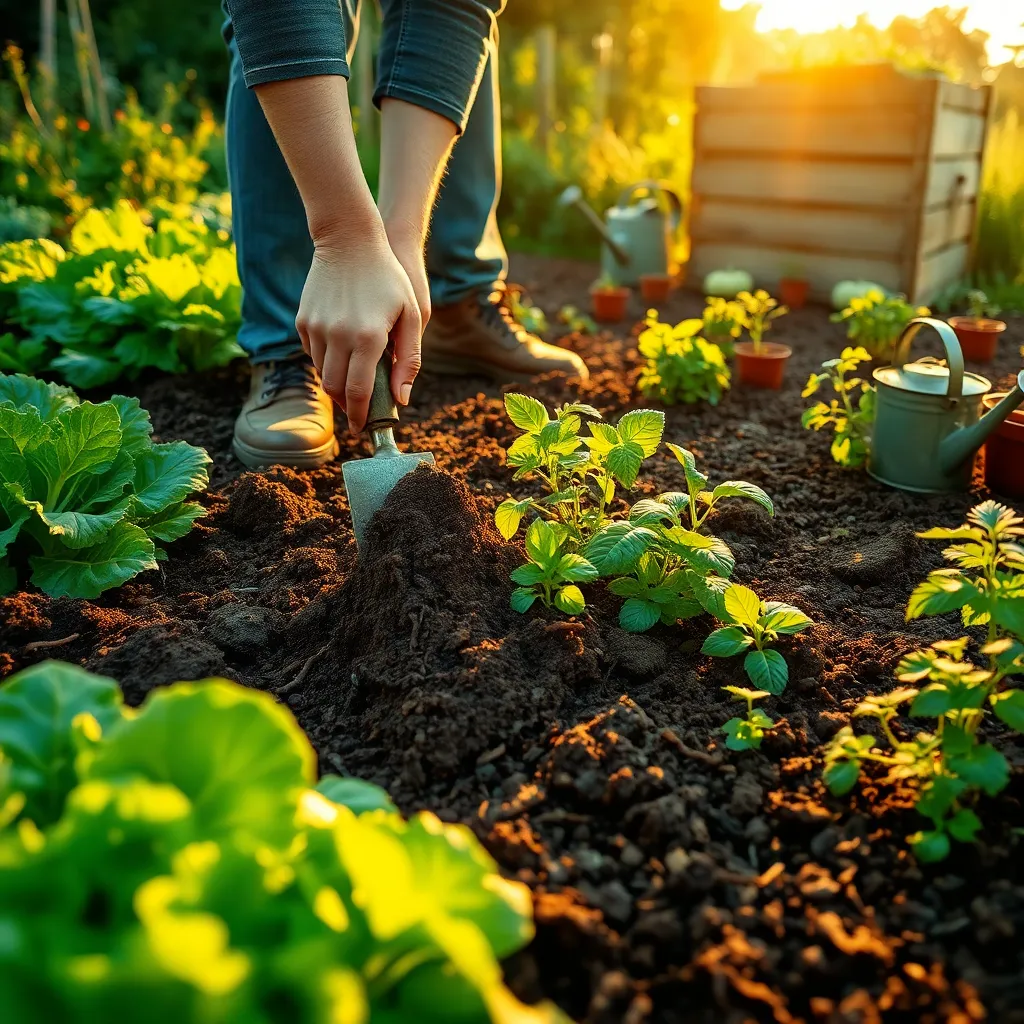
Keeping your soil in excellent condition is essential for a thriving garden year-round. Begin by regularly testing your soil to understand its pH levels, nutrient content, and texture. This will help you determine if you need to amend it with organic matter, such as compost or well-rotted manure, to improve its structure and fertility.
Mulching is a simple yet effective technique to maintain soil health. Apply a layer of organic mulch, such as shredded leaves or bark chips, around plants to help retain moisture and suppress weeds. Additionally, mulch breaks down over time, adding nutrients to the soil and improving its structure.
Consider practicing crop rotation if you grow vegetables, as it prevents soil depletion and reduces pest and disease buildup. Rotate plant families each season to maintain nutrient balance and improve soil health. Also, incorporating cover crops like clover or vetch during the off-season can enhance soil fertility by fixing nitrogen and adding organic matter.
Watering efficiently is crucial for maintaining healthy soil conditions. Aim to water deeply and infrequently, encouraging plants to develop deeper root systems. To avoid compacting the soil, especially if it’s clay-heavy, use a soaker hose or drip irrigation to ensure even moisture distribution without over-saturating the ground.
Incorporate Evergreen Foliage
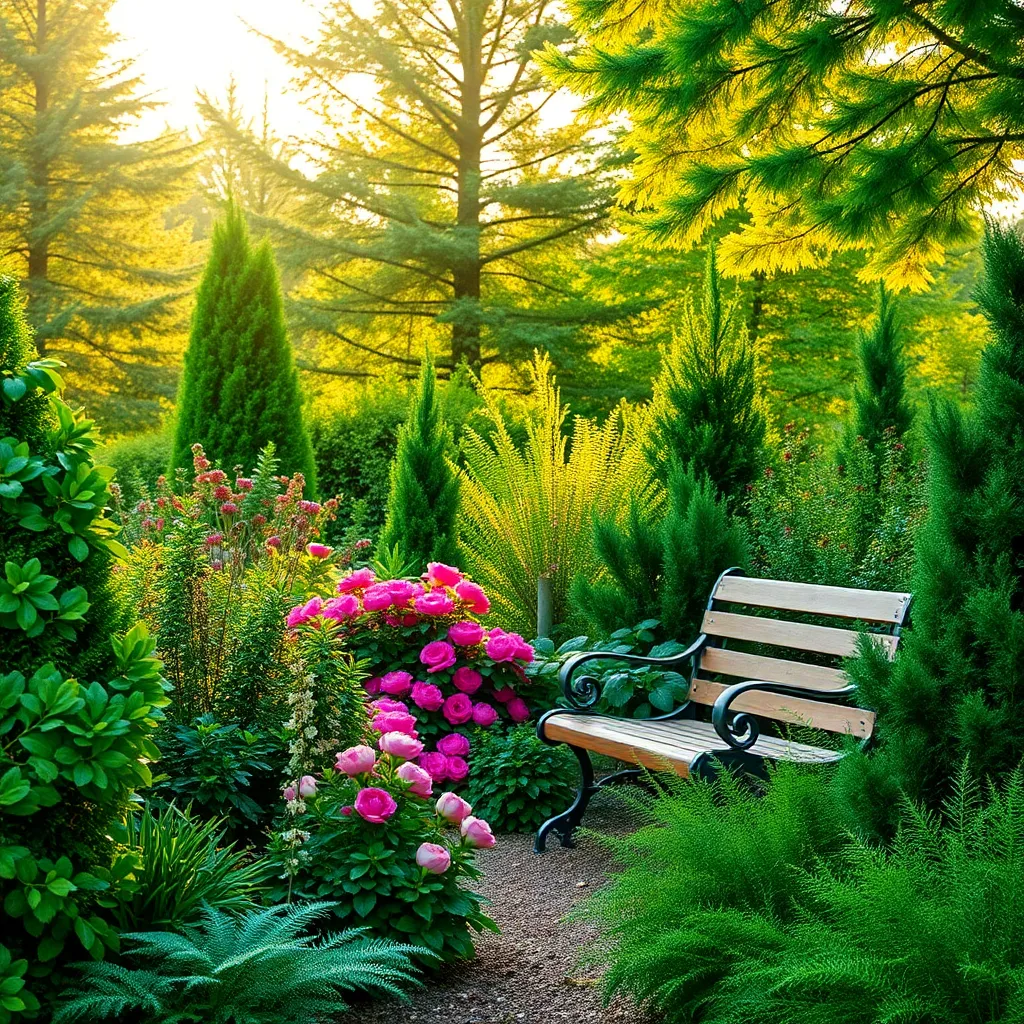
Evergreen foliage is essential for maintaining visual interest in your garden throughout the year. By incorporating evergreen plants, you ensure a steady backdrop that highlights seasonal blooms and provides structure even in the dormant winter months.
Start by selecting a variety of evergreen plants that suit your climate and soil conditions. For a balanced appearance, consider combining different types like shrubs, ground covers, and trees, which can thrive in a range of environments.
When planting evergreens, it’s important to consider their mature size to avoid overcrowding. Leave ample space between each plant to allow for air circulation, which helps prevent diseases and encourages healthy growth.
Watering needs for evergreens can vary, but most prefer consistent moisture, especially in the first year as roots establish. Use a layer of mulch around the base to retain soil moisture, reduce weeds, and provide insulation during temperature fluctuations.
For more advanced gardeners, pruning evergreens can enhance their shape and encourage bushier growth. Focus on trimming back dead or diseased branches and thin out dense areas to improve light penetration and air flow.
Add Year-Round Garden Decor
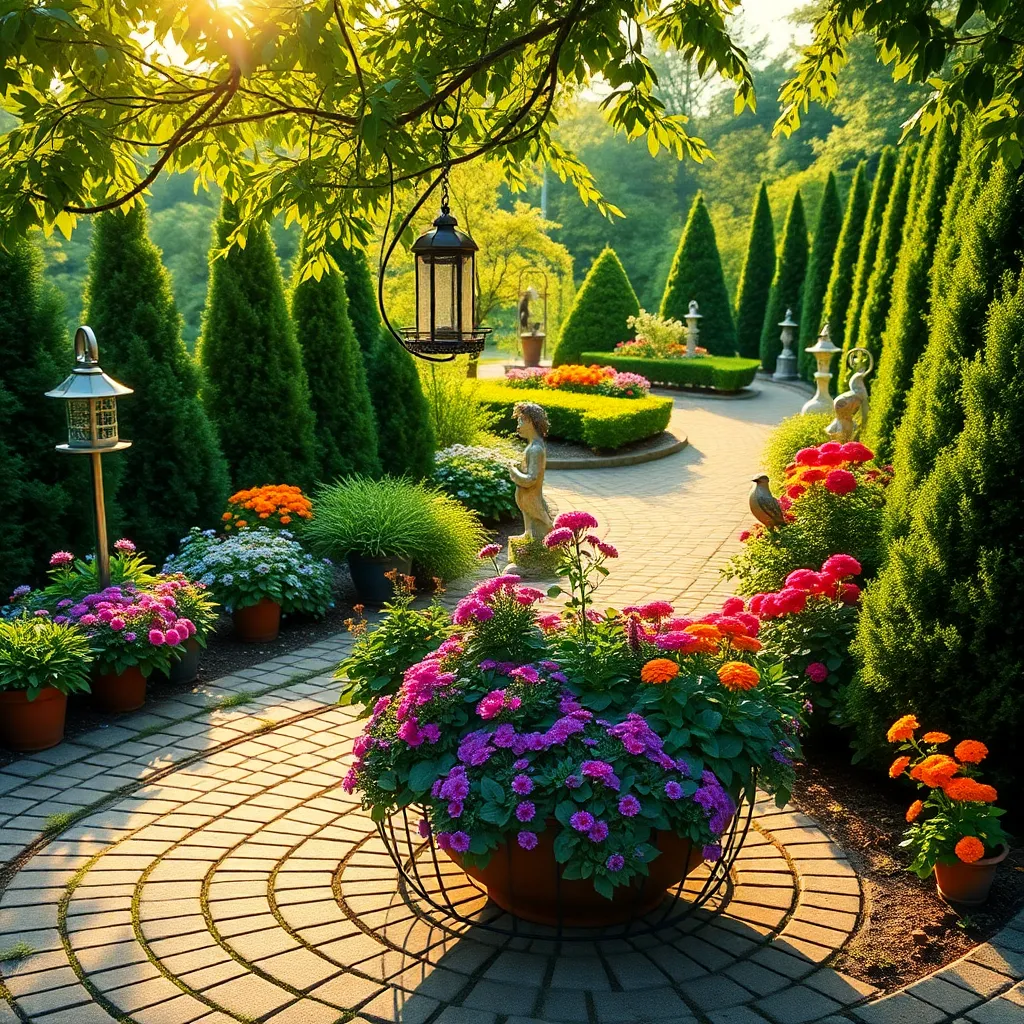
Adding year-round garden decor can enhance the beauty of your garden regardless of the season. Consider incorporating elements like garden sculptures, birdbaths, or decorative rocks to provide visual interest even when plants aren’t in full bloom.
When choosing garden decor, select materials that can withstand various weather conditions. Metal, stone, and weather-treated wood are excellent choices for durability and longevity.
For a more personal touch, you can create DIY garden art projects using recycled materials. This can include painted stones or homemade wind chimes that add a unique flair to your outdoor space.
Strategically placing garden lights can transform your garden into a magical place as the sun sets. Use solar-powered lights along pathways and near focal points to highlight these areas at night.
Incorporating a mix of permanent and movable decor allows you to change your garden’s look with the seasons. Consider using lightweight pots and decor that can be easily repositioned to keep your garden fresh and engaging throughout the year.
Conclusion: Growing Success with These Plants
As you embark on the journey to make your garden a year-round sanctuary, remember the five key relationship concepts we’ve explored: understanding your garden’s unique needs, fostering consistent care and attention, embracing change with the seasons, nurturing patience for long-term growth, and celebrating each bloom and transformation. These principles mirror the nurturing of personal relationships, where understanding, consistency, adaptability, patience, and celebration are vital.
To take immediate action, begin by assessing your garden’s current state and planning a seasonal schedule that incorporates these concepts. Whether it’s adding winter-friendly plants or establishing a watering routine, small steps can lead to flourishing results.
Save or bookmark this article as your go-to guide for maintaining a vibrant garden and nurturing relationships. Let it serve as a reminder that both gardens and relationships thrive with mindful attention and care. As you cultivate your garden, know that these principles are seeds for lasting relationship success. Remember, a beautiful garden and a fulfilling relationship are both within your reach—nurture them and watch them grow.
